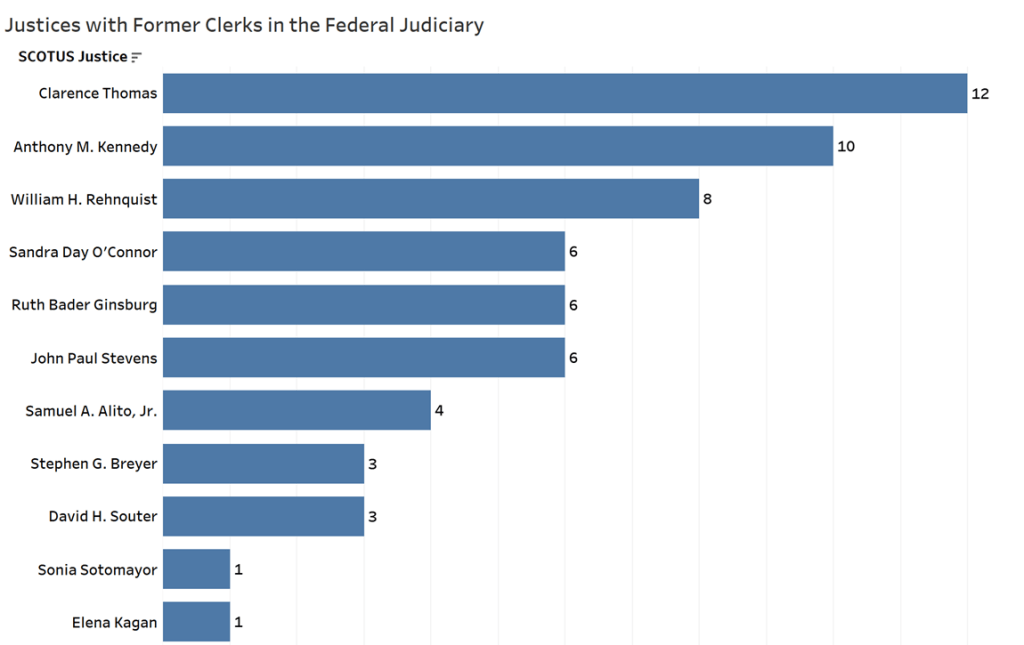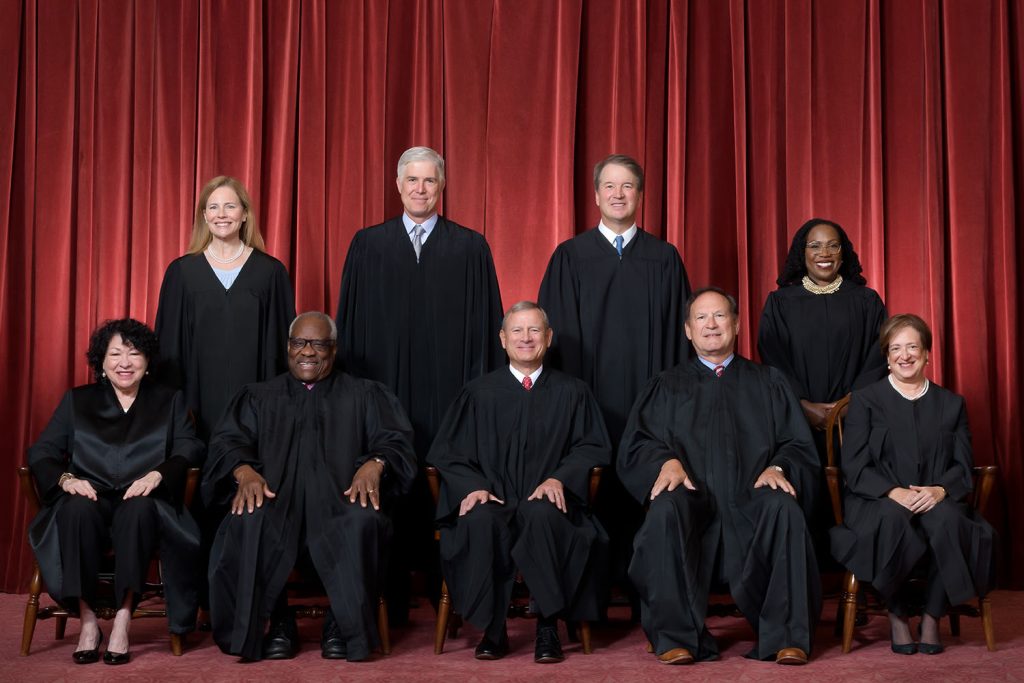Empirical SCOTUS is a recurring sequence by Adam Feldman that appears at Supreme Court docket information, primarily within the type of opinions and oral arguments, to supply insights into the justices’ resolution making and what we will count on from the court docket sooner or later.
Amongst a president’s most enduring legacies are the federal judges they appoint – significantly Supreme Court docket justices. This permanence stems from life tenure, a constitutional provision that ensures judicial independence but in addition transforms every appointment right into a generational guess on the nation’s authorized future.
But historical past is suffering from presidential miscalculations. President Dwight D. Eisenhower supposedly referred to as his appointment of Earl Warren as chief justice one among his “biggest mistakes,” as Warren turned a liberal stalwart for over a decade. Justices John Paul Stevens and David Souter, each nominated by Republican presidents, advanced into among the court docket’s most liberal members. Had Republican presidents persistently put in reliably conservative justices because the mid-Twentieth century, the court docket would have been way more conservative than it really was (and maybe even is right this moment).
However presidential legacy is simply a part of the story. The judges themselves have developed their very own succession methods. Lately, a placing sample has emerged: Supreme Court docket justices now seem able to retire solely with tacit – or maybe specific – assurances that they are going to be changed by somebody they helped form, usually a former clerk. This, mixed with the truth that so many such clerks now function judges on the decrease courts, has had profound results – and can proceed to take action – on the federal judiciary.
Judicial successors
Supreme Court docket clerkships signify a comparatively fashionable phenomenon, rising primarily because the court docket advanced via the Twentieth century. The variety of clerks allotted to every justice has steadily increased, from two till 1969, to a few within the Seventies, and to 4 in 1980. This has additionally expanded the pool of potential judicial heirs. Justice Byron White was the primary justice to have clerked for a former justice – Chief Justice Fred Vinson in his case. Chief Justice William Rehnquist clerked for Robert Jackson, and Stevens for Wiley Rutledge. Stevens was confirmed in 1975. Of the following a number of justices – Antonin Scalia, Anthony Kennedy, Souter, Clarence Thomas, and Ruth Bader Ginsburg – none held a Supreme Court docket clerkship.
Then got here Justice Stephen Breyer, confirmed in 1994, who had clerked for Justice Arthur Goldberg. The vast majority of justices appointed after 1994 held Supreme Court docket clerkships at one level of their careers – Chief Justice John Roberts for Rehnquist, Elena Kagan for Thurgood Marshall, Neil Gorsuch for Kennedy (though he was initially employed by White earlier than his retirement), Brett Kavanaugh for Kennedy, Amy Coney Barrett for Scalia, and Ketanji Brown Jackson for Breyer. Neither Samuel Alito nor Sonia Sotomayor clerked on the Supreme Court docket degree, leaving them a minority on this regard.
Certainly, since Kennedy retired in 2018, the phenomenon of justices being changed by their clerks has develop into the norm slightly than the exception. As famous, not one however two of Kennedy’s former clerks have been appointed by President Donald Trump in succession: Gorsuch stuffed Scalia’s seat, which had remained vacant longer than any in court docket historical past, and Kennedy’s personal seat went to Kavanaugh. According to Politico, Kennedy’s backroom conversations with Trump previous to his departure could have been used to facilitate a transition. For Trump, this was advantageous: he may set up extra persistently conservative justices than Kennedy, who had often sided with liberals on consequential civil liberties circumstances just like the same-sex marriage resolution in Obergefell v. Hodges.
This pattern of former clerks becoming a member of the court docket continued with Barrett, a Scalia clerk, changing Ginsburg after her dying, and Jackson, a Breyer clerk, succeeding her former mentor.
The downstream results of Supreme Court docket clerkships can reshape American legislation throughout generations. Take into account the lineage from Jackson to Rehnquist, who clerked for Jackson, to Roberts, who clerked for Rehnquist. And this chain of affect now spans greater than half a century, with every era of jurists passing their interpretive strategies to the following.
Breaking down the numbers
However that isn’t the total image. The info additionally reveals how widespread former Supreme Court docket clerks are within the federal judiciary as an entire.

Thomas leads by a considerable margin, with 12 former clerks employed as federal judges – a testomony each to his lengthy tenure and his deliberate cultivation of conservative judicial expertise. Kennedy follows with 10 clerk-judges, together with the 2 Supreme Court docket justices talked about earlier. Rehnquist positioned eight former clerks, persevering with his affect even after his 2005 dying.
Justices Sandra Day O’Connor and Ginsburg every depend six former clerks within the federal judiciary, and Stevens additionally positioned six. Alito has 4 clerk-judges, whereas Breyer and Souter every have three. (Maybe most surprisingly, given his place as chief justice, Roberts has not but seen a former clerk develop into a federal choose.)
Implications: the self-replicating judiciary
These patterns of clerk placement, each on the federal judiciary and the Supreme Court docket itself, level towards a elementary transformation in how the federal judiciary perpetuates itself. What started as maybe an off-the-cuff choice for continuity has advanced into one thing approaching a self-replicating system, the place judicial philosophies cross from one era to the following via rigorously cultivated mentor-clerk relationships. And the implications prolong far past particular person careers and even the ideological steadiness of specific courts.
First, the clerk pipeline is creating unprecedented ideological coherence inside judicial camps. When Scalia’s originalism passes to Barrett, for instance, we see not simply particular person judges however colleges of thought reproducing themselves and evolving throughout ranges of the federal judiciary.
Second, the emphasis on clerk credentials could also be narrowing the variety of judicial backgrounds and experiences. When Supreme Court docket seats more and more go to former clerks of earlier justices, and circuit judgeships observe related patterns, the federal judiciary dangers turning into a closed system that prizes insider credentials over different types of distinction.
Third, strategic retirement is more likely to develop into much more entrenched as justices and judges see their former clerks efficiently ascend to larger courts. Why danger having your seat stuffed by somebody who will dismantle your life’s work when you may time your retirement to make sure a former clerk succeeds you? This calculus transforms judicial service from a dedication to resolve circumstances till incapacity right into a extra strategic career-management resolution. The court docket turns into much less impartial of politics, no more, as retirements more and more align with electoral cycles.
Lastly, the focus seen in these numbers – significantly Thomas’ 12 clerk-judges – suggests {that a} comparatively small variety of judges are having outsized affect on the composition of the federal bench. And, primarily based on the numbers, this leans principally in a conservative route.
What subsequent?
Wanting ahead, a number of questions demand consideration. Will this pattern proceed to speed up? Relatedly, will judges who lack Supreme Court docket or distinguished circuit clerkships discover their paths to the bench more and more blocked? And can the general public’s notion of judicial independence endure consequently?
In fact, the information introduced right here captures solely a second within the evolution of the federal judiciary – a second when the clerk pipeline has develop into sufficiently seen to research. However as Trump’s second administration considers judicial appointments, and as sitting justices ponder their retirement timing, these patterns of succession will probably intensify.
What appears most sure is that the period of unpredictable judicial appointments – when Republican presidents would possibly appoint liberal justices or when judges would possibly dramatically evolve on the bench – is essentially over. The clerk pipeline, mixed with extra refined vetting processes and strategic retirement selections, has made judicial appointments way more predictable. We all know not simply what ideology a nominee holds, however the place they realized it, from whom, and the way they’re more likely to apply it. The federal judiciary is thus turning into, for higher or worse, a self-perpetuating establishment through which every era of judges rigorously selects and trains the following.
Beneficial Quotation:
Adam Feldman,
A justice’s most lasting legacy,
SCOTUSblog (Nov. 14, 2025, 9:30 AM),
https://www.scotusblog.com/2025/11/a-justices-most-lasting-legacy/
